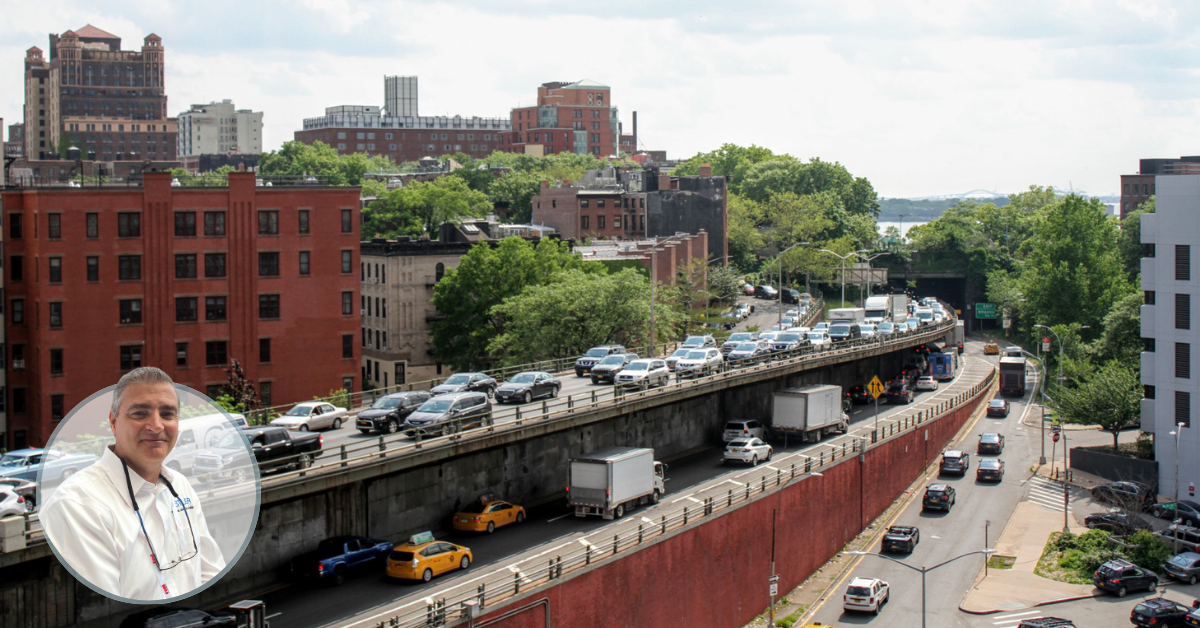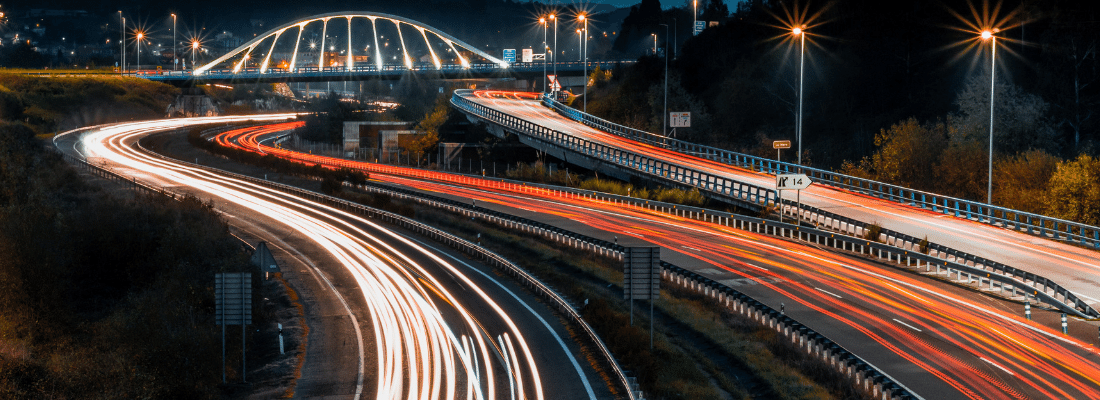Building digital twins of road infrastructure has the potential to greatly assist asset management operations as well as enable new construction projects to be more efficient than ever before and even enable more sophisticated traffic modelling, saving time and money and lowering emissions across entire road networks.
Digital infrastructure for remote working
The Covid-19 pandemic has changed the way that many industries operate – in some cases, forever. With a lot of physical and interactive work being moved online, the world needed digital infrastructure for remote working and monitoring. While this already existed to an extent, the ‘stay at home’ restrictions accelerated the development of truly viable solutions and opened our minds to change. For the transportation and infrastructure sectors, remote working meant finding new ways to manage physical assets and developing better ways to share information. It highlighted the power of accurate and reliable data, and demonstrated the benefits of information sharing across different sectors.
“The experience of the past year has shown what we can do when forced,” says Steve Cockerell, industry marketing director, transportation at Bentley Systems, “And this is an indicator to the level of opportunity that change provides if it is part of a strategy for delivering better business outcomes rather than a reaction to challenges encountered. We have to find safe, sustainable ways of overcoming the challenges we encounter in a very complex industry. In the short term this means increased digitization, remote working, and a greater reliance on building information modeling (BIM) – advancing it to include 4D and 5D simulation to re-plan and reoptimize project schedules.”
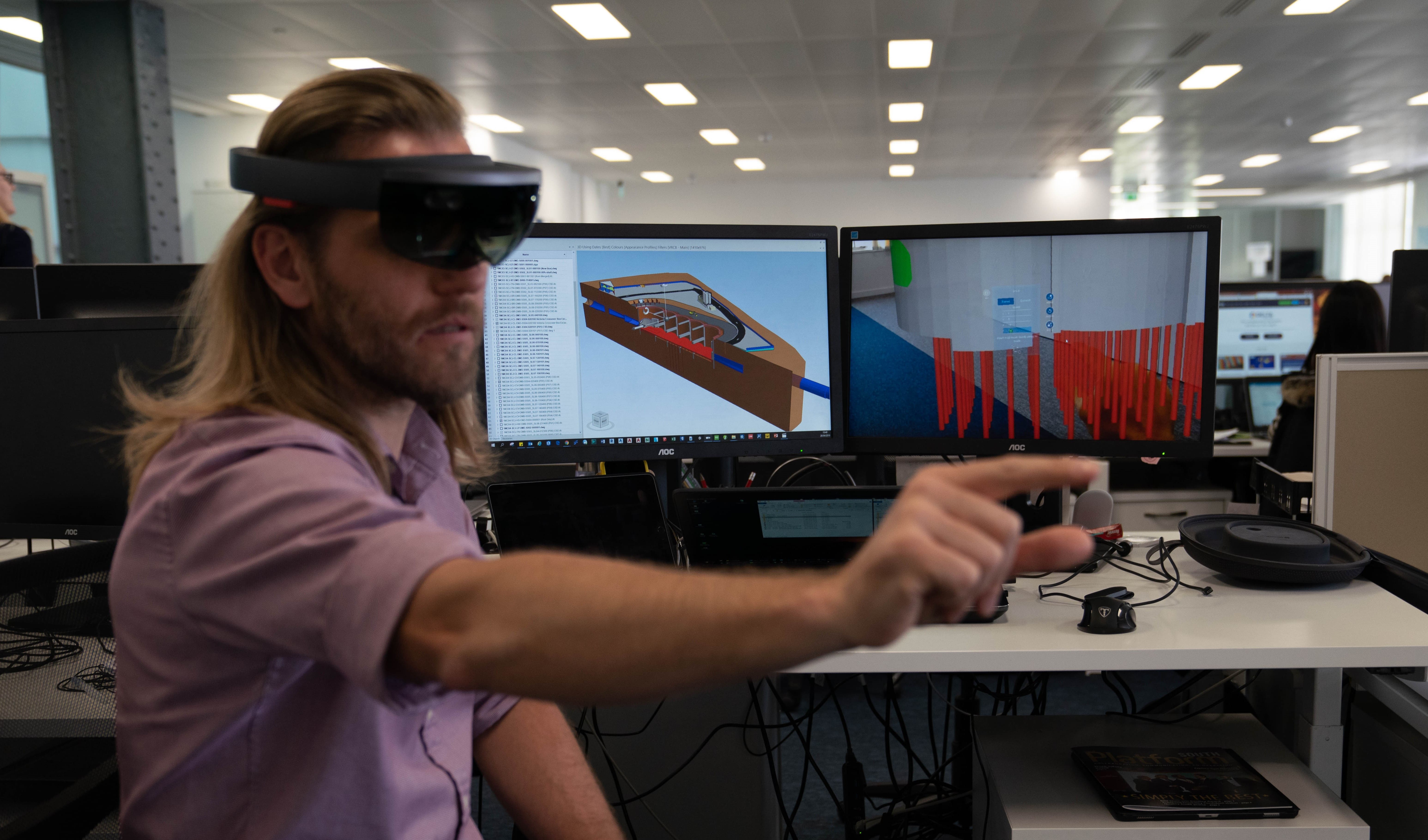
BIM standards and processes are well known to increase productivity and quality. Road authorities have been using 3D models to aid with the design process for a while now. Some organizations are also looking at how a similar approach to managed information, standardized processes and digital workflows could also benefit procurement and construction.
The Internet of Things and data driven decisions
“Moving beyond BIM, fueled by the increasing amount of data we collect, create, and consume in our day-to-day tasks, and the volume of connected devices delivering big data and the Internet of Things (IoT), we are already seeing more and more decisions being made based on insight gained directly from data,” says Cockerell. “That’s why I believe that infrastructure digital twins will be the next big digital disruption in our industry.”
Digital twins are an interactive, virtual representation of physical assets or systems. They gained popularity during the depths of pandemic when teams were forced to learn new ways of working together remotely. Now as the industry works to recover from the effects of Covid-19, forward-thinking organizations are looking at how we can use this futuristic technology to rebuild in a safer, more sustainable way.
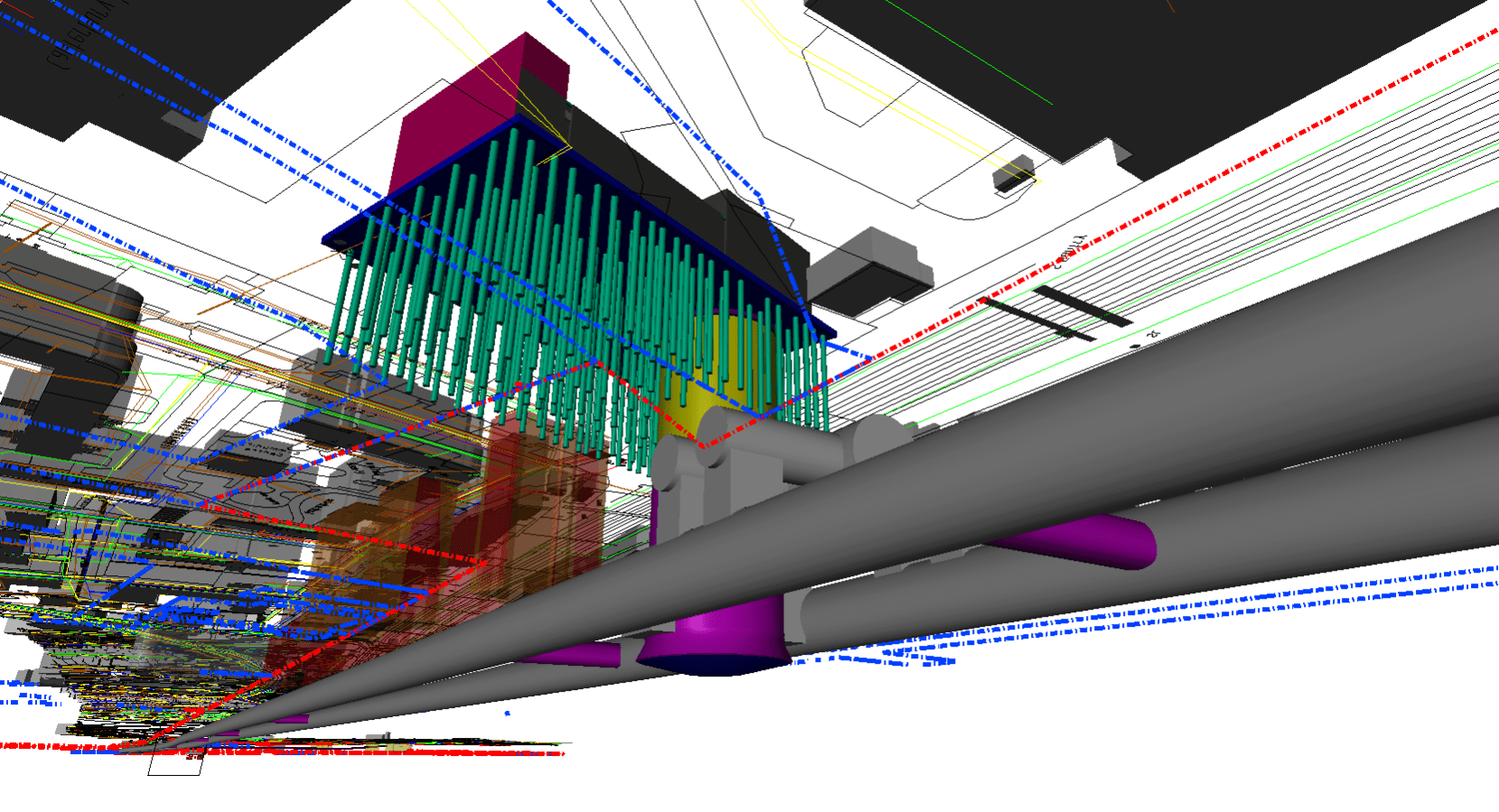
Source: courtesy of Skanska Costain STRABAG JV
The Centre for Digital Built Britain (CDBB) predicts that over the next decade this combination of BIM technology, digital twins and the Internet of Things (IoT) will enable us to plan infrastructure more effectively, build it at lower cost, and improve operations and maintenance for better performance over a longer lifespan. The Centre for Digital Built Britain is a partnership between the Department of Business, Energy & Industrial Strategy and the University of Cambridge. Their combined aim is to understand how the construction and infrastructure sectors can use a digital approach to better design, build, operate, and integrate the built environment. A key part of CDBB’s strategy is its National Digital Twin program (NDTp), which aims to ensure that high-quality, secure data is used effectively to improve how infrastructure is built, managed and operated. The NDTp is already working with future users and early adopters of digital twins to develop an information management framework that will ensure secure and resilient data sharing, and effective information management.
Virtual reality and road network infrastructure
A digital twin can contain a lot of varied information – and may even represent a whole city - but it can also be streamlined to represent specific assets, such as road network infrastructure. A great example of an early adopter is the National Highways agency (formally Highways England), which is currently developing a several virtual twins of the UK road network as part of its Digital Roads Strategy. The digital twins will see drawings and static models replaced with digital versions that can predict maintenance issues, such as potholes. The idea is to join all of the digital twins together as the data builds up, to create one mega single source of data.
“These digital twins have the potential to make construction quicker and easier,” says Elliot Shaw, executive director, strategy and planning at National Highways. “They will also enable us to operate our infrastructure in a more resilient way.”
Surveying still involves sending people out to physically look at and assess the condition of assets to plan for improvement. If that can all be done digitally, it saves a lot of time and money. “There are a lot of potential benefits in terms of both construction and operation,” Shaw confirms. “One of the exciting things in the longer term will be the ability to operate with other entities in a much more joined-up way. One of the challenges we have when we're enhancing our roads is understanding where other utilities, such as cables and pipes, are. A national digital twin would make it much easier for organizations to share information and understand how our different activities or initiatives impact each other. This will not only reduce costs and time spent on investigations, it will also improve safety because we will all have a much clearer sense of how the different pieces of our networks work together.”
The National Highways digital twin project is being developed in collaboration with UK Research and Innovation (UKRI), Engineering and Physical Sciences Research Council (EPSRC), the EU MSCA COFUND programme, Costain and the University of Cambridge. The collaborative team is excited to see how the digital twins will transform the way they plan and upgrade the road network.
“Let’s say you wanted to upgrade your road signs to digital signs,” says Shaw. “The digital twin can provide you with the current location of all of the signs and gantries, as well as the position of power cables and pipes on the network. You can then determine where would be a good position for the upgrade. And you do all of this on a computer, instead of physically having to go out and look at the infrastructure.”
Information integration
For now, the focus is on asset management, but ultimately National Highways wants to use the digital twin to combine asset management with traffic operations. “We will be able to use the digital twin to simulate traffic flow on the network,” Shaw explains. “This will enable us work out how we can optimize flow using signs and signals and get as many people through the network as smoothly as we can. We also expect the data in our digital twin to build over time, so eventually it could include things like movement of data and maps. Ultimately, we want the digital twin to include data about ongoing operations.” Captured data can also be used to inform National Highways’ operational grid.
When there is so much information to manage, data needs to be held securely and used effectively. For National Highways, data integration is being achieved in several ways. One example is the Business Information Framework (BIF), which forms part of National Highways’ Smart Motorways program. “This is a useful platform that enables the data in our program to be standardized, integrated and shared between all of the players involved,” says Shaw. “Historically, a lot of that information would not have been captured digitally. It would have been on PDFs and on proprietary systems. We're trying to get everyone collaborating, using one single data source.”
As a starting point, digital maps are currently being drawn up of the M25 (London’s orbital motorway). This one of the UK’s most important motorways and is accordingly one of the busiest. Ongoing severe congestion has led to the introduction of numerous traffic management initiatives over the years, most recently National Highways’ Smart Motorway scheme. The digital maps will be a useful tool for managing infrastructure on this notoriously busy road, providing critical information on operations that can be shared in real time. A digital twin pilot is also being used to help with the planning and implementation of National Highways’ A428 Black Cat project, which will improve journeys between Milton Keynes and Cambridge. These two projects will form the foundation of National Highways’ digital twin infrastructure.
“We're really trying to push forward the dream of an ultimate single digital twin that covers the entire network for both development and operations, but that's going to take some time,” says Shaw. “So we’re taking on the network in bite-sized chunks, advancing our digital assets in a variety of ways that will realize that vision over time.”
Long term success
The Project of the future report says that while most infrastructure owners and contractors recognize the potential of digital transformation, there are challenges that need to be overcome to make these work long term and at scale. The report, which summarizes the best ideas presented at the 2021 GII Summit, says that too often, organizations fail to progress further than individual pilot projects. So why is this?One reason is data: getting it, securing it and being able to trust it. “The biggest challenge that everyone has at the moment, is making sure that the data is there, and the data is good quality,” says Shaw. “You also need to make sure that you have rules around your data, which make sure that it is operable - both within your organization, and as part of a national digital twin.”
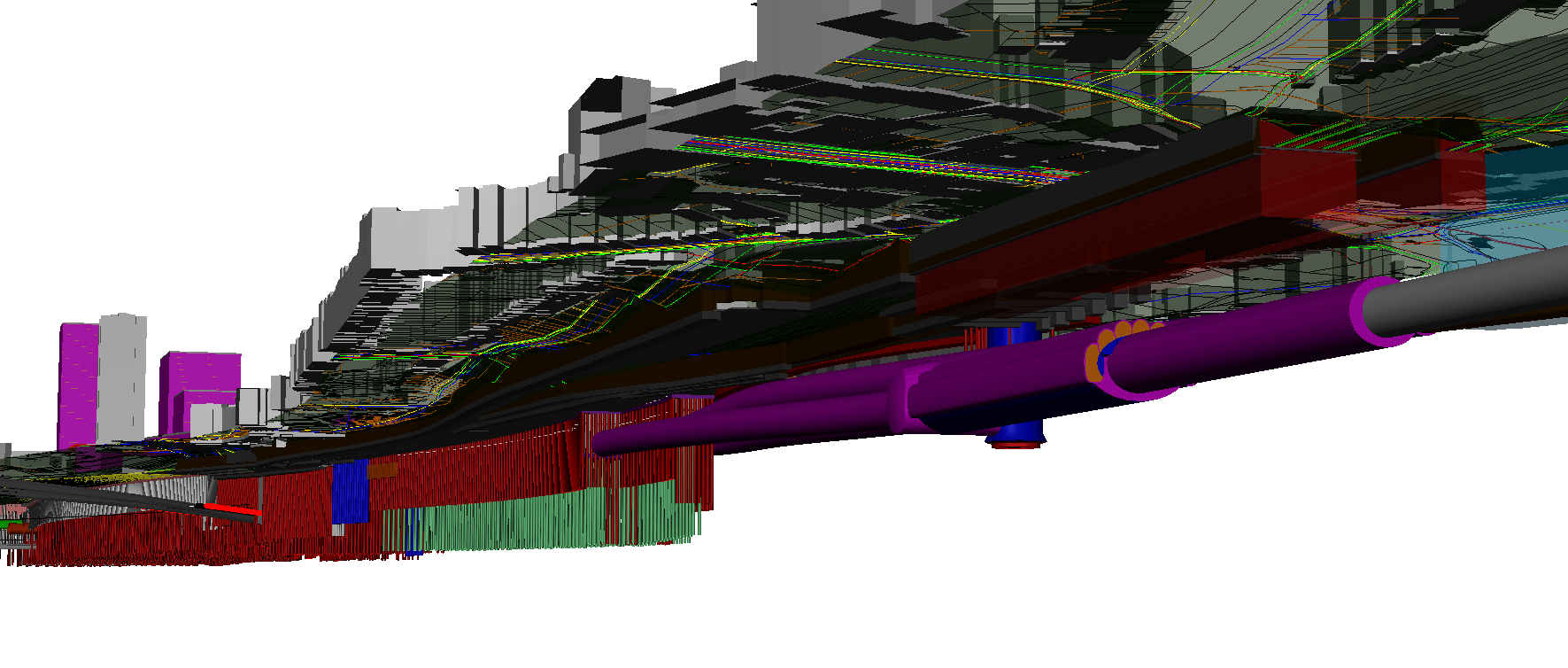
Source: courtesy of Skanska Costain STRABAG JV
Participants at the 2021 GII summit also raised concerns about cost, as well as worries about an overall lack of knowledge and experience. Indeed, change can be a challenge. The Project of the future report resolves that “to move beyond pilot projects and experimentation, organizations must undertake comprehensive transformation efforts at both the enterprise and project levels,” stressing that “increased collaboration can help align stakeholders, inspire innovation, and establish outcome-focused measures of progress.”
Digital twins are powerful tools that provide road infrastructure owners with a better understanding of their systems and enable them to anticipate problems before they occur. They have the potential to revolutionize the way we manage our infrastructure, providing benefits to society, the economy, business, and the environment. But only if we have vision, reliable data, and a willingness to collaborate.
“We recognize that data is a massive asset for us, so we need to make sure that we are managing our data and exploiting its value in the biggest way possible,” says Shaw. “By starting with a handful of initiatives, we are making sure that we can access that high quality data. We can then start building on that and over time we can create a longer-term digital twin.”
Sidebar: Digitalization means a smaller carbon footprint
While the most visible benefits of the digital twin involve connecting different entities together, reducing the need for manual surveys and intelligent future planning, making all operations quicker and easier is beneficial for the environment too. “It is well known that construction and utility works have a high carbon footprint, but even things like surveys have an impact on the environment,” says Shaw.
“Carbon dioxide is now widely recognized as the primary driver for climate change and around 70% of the world’s emissions can be traced to infrastructure,” confirms Steve Cockerell, industry marketing director, transportation at Bentley Systems. Figures from the International Energy Agency (IEA) indicate that transport is currently responsible for 24% of direct CO2 emissions from fuel combustion. Of all transport CO2 emissions, road vehicles, including cars, trucks, buses and two- and three-wheelers account for nearly 75%. The IEA warns that for the transport sector to continue to meet mobility and freight demand while reversing CO2 emissions growth, ‘energy efficiency measures will need to be deployed to maximum effect’.
“If we can simulate our network to improve traffic flow, that will reduce our carbon footprint because stopped traffic creates a lot of emissions,” says Shaw. “The digital twin will enable us to demonstrate that making specific changes to signage or signals – or other things - will improve traffic flow, without having to physically trial these changes. This has the potential to reduce substantially emissions on the UK road network.”
